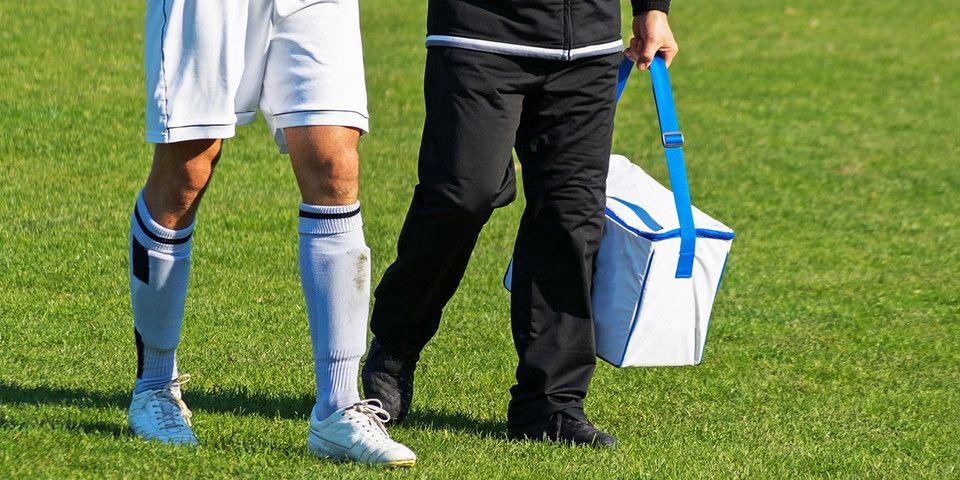Overuse and Other Lacrosse Injury Prevention
Prevent overuse and other career-limiting sports injuries.
Traditional wisdom encourages athletes in lacrosse and other sports to specialize their participation at an early age, but new research suggests that sports specialization may be directly linked to overuse injuries. Athletes young and old must increase their awareness and safety practices in order to prevent career-limiting complications. If you or someone you love is at risk as a result of sports specialization, please read over this primer on lacrosse injury prevention from the team at Rothman Orthopaedic Institute.
What To Expect: A List Of The Most Common Lacrosse Injuries
Overall, lacrosse is a moderate risk sport in which the vast majority of injuries are minor strains, sprains, and bruises. However, more significant injuries can occur, such as:
-
Stress fractures, jumper's knee, and Osgood-Schlatter's disease–overuse injuries that occur when muscles, bones, and ligaments are worked beyond their capacity.
-
Knee injuries, including anterior cruciate ligament (ACL) tears–the leading cause of lost game and practice time for lacrosse athletes.
-
Non-contact knee and ankle sprains–represent about 16%-21% of all reported lacrosse injuries.
-
Muscle strains of the hamstrings, quadriceps, and groin–typically non-contact related.
-
Head and face injury, including concussion–most often the result of a collision with other players or with the ground.
-
Shin splints and foot blisters–due to continuous running and changes in field surfaces.
What To Do: The Best Methods Of Lacrosse Injury Prevention
-
Know the rules and respect the game. Although lacrosse allows significant contact, unprotected hits have no place in fair play. Rules which promote free play and limited contact must be obeyed by coaches, officials, and players for effective lacrosse injury prevention.
-
Maintain open communication. Discuss your goals and health concerns with your parents, coach, trainer, and physician to ensure the right program of health and wellness.
-
Be proactive in your conditioning. Stay in shape year round. Warm up and cool down properly by thoroughly stretching each time. Stay hydrated and get plenty of rest.
-
Eat for health and sustained activity. Get plenty of calcium, vitamin D, and magnesium in your diet to stimulate bone and ligament health.
-
Wear a complete set of equipment in good condition. Protective equipment should be appropriately sized. Do not modify mouthpieces or gloves.
-
Report all injuries. Do not play through the pain! Decrease training time and intensity if pain or discomfort develops or intensifies.
-
Give yourself a break. All athletes should take 1-2 days a week and 1-2 months a year away from their sports to prevent burnout and overuse injuries. In addition, sample different sports and activities, and don't play any sport year-round.
What To Look For: How To Identify Overuse Injuries
Early intervention is the key to lacrosse injury prevention and recovery. Overuse injuries tend to develop in four stages:
-
Discomfort that disappears during warm-up. Activity may continue as long as the injury does not worsen.
-
Discomfort that may disappear during warm-up but reappears at the end of an activity. Activity may continue at a modified pain-free level while being treated. Treatment must continue until completely healed.
-
Discomfort that gets worse during the activity. Activity must immediately cease, but your physician will allow a return to activity after identifying the cause and after restoring you to a state that is completely symptom-free.
-
Pain or discomfort all the time. Replacement of activity is recommended unless cleared by your physician to return.
The main goal of lacrosse injury prevention is to minimize injury and sustain athletic careers as long as is healthy for the players. If you have any questions about your risk or if you are experiencing pain, your first step should be to consult your physician right away. For more specialized treatment, visit us here or contact us at 1-800-321-9999.
Related Physicians
Related Specialties
Related Programs
-

Athletic Training- Sport Medicine Outreach
Our Field Athletic Trainers provide direct sports medicine care to youth, high school, college and professional athletes. Rothman AT’s provide athletic training services throughout Southeastern PA to interscholastic high schools, colleges, as well as tournaments and special events.Read More -

Women’s Sports Medicine Program
The Women’s Sports Medicine Program at the Rothman Orthopaedic Institute is the first of its kind in the Philadelphia metro area and one of only several such programs specializing in the comprehensive care of the female athlete in the country.Read More




